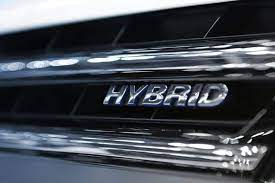
Hybrid technology, which combines aspects of different technologies, often exhibits several advantages, but it is not without its drawbacks. Here’s a comprehensive exploration of the disadvantages of hybrid technology:
- Cost: One of the primary disadvantages of hybrid technology is the initial cost. Hybrid vehicles, for example, tend to be more expensive than their traditional counterparts. The dual powertrain and sophisticated technology contribute to higher manufacturing costs, which are often passed on to the consumer.
- Complexity: Hybrid systems are inherently more complex than conventional systems. This complexity can lead to increased maintenance costs and may require specialized technicians for repairs. The additional components, such as electric motors, batteries, and control systems, can make troubleshooting and repairs more challenging.
- Weight: The incorporation of an additional power source, such as a battery, adds weight to hybrid vehicles. This extra weight can impact fuel efficiency and overall performance. It may also require additional engineering considerations for the vehicle’s structure, potentially compromising aspects like handling and braking.
- Limited Electric-Only Range: While advancements have been made, many hybrid vehicles still have a limited electric-only driving range. Once the electric range is depleted, the vehicle relies on the internal combustion engine, reducing the overall environmental benefit in certain driving conditions.
- Battery Degradation: The performance of hybrid vehicles is heavily dependent on the health of the battery. Over time, batteries can degrade, resulting in a reduction in overall vehicle efficiency and electric-only driving range. Replacing batteries can be expensive, and the disposal of old batteries poses environmental challenges.
- Charging Infrastructure: Plug-in hybrid vehicles require charging infrastructure, similar to fully electric vehicles. The availability and accessibility of charging stations can be a significant drawback, especially in regions where such infrastructure is underdeveloped.
- Dependency on Combustion Engine: In many hybrid designs, the internal combustion engine remains a crucial component. This means that hybrid vehicles still rely on fossil fuels, and their overall environmental impact depends on the source of the electricity used to charge the battery.
- Limited Model Options: The variety of hybrid models available in the market may be limited compared to traditional gasoline or diesel vehicles. Consumers might find fewer options in terms of vehicle types, sizes, and features when opting for a hybrid.
- Resale Value: The resale value of hybrid vehicles can be lower than that of traditional vehicles. This is partly due to concerns about battery replacement costs and the perception that hybrid technology may become obsolete as fully electric vehicles become more prevalent.
- Maintenance Challenges: While hybrids are generally designed for reliability, their unique components can pose challenges for maintenance and repairs. Specialized training and equipment may be required for technicians, potentially limiting the availability of service options.
- Limited Towing Capacity: The additional weight and complexity of hybrid systems can impact a vehicle’s towing capacity. Traditional internal combustion engines often outperform hybrids in tasks that require significant towing power, making them less suitable for certain types of work or recreational activities.
- Regenerative Braking Limitations: While regenerative braking is a feature in many hybrid vehicles, it may have limitations, especially during aggressive or high-speed driving. The braking system’s ability to capture and convert kinetic energy into electric energy may be less effective in certain conditions, potentially affecting overall braking performance.
- Cold Weather Performance: Hybrid vehicles, particularly those with plug-in capabilities, may experience reduced performance in cold weather. Cold temperatures can negatively impact battery efficiency and overall electric range, requiring more reliance on the internal combustion engine, which may be less efficient in colder conditions.
- Limited Market Acceptance: Despite increasing awareness and acceptance of hybrid technology, there are still segments of the market that are hesitant to embrace it. Some consumers may have concerns about the long-term reliability of hybrid systems, potentially limiting the widespread adoption of this technology.
- Technology Obsolescence: Rapid advancements in automotive technology can lead to hybrid systems becoming obsolete sooner than expected. As electric vehicle technology evolves, consumers may be more inclined to adopt fully electric vehicles, leaving hybrid technology behind in terms of innovation and performance.
- Space Constraints: Integrating hybrid systems into existing vehicle designs may result in compromised interior space. The need to accommodate batteries and additional components can limit cargo space or passenger comfort, which may be a concern for consumers prioritizing interior roominess.
- Environmental Impact of Manufacturing: While hybrid vehicles offer environmental benefits during operation, the manufacturing process involves the production of batteries and other complex components. The extraction and processing of materials for these components can have a significant environmental impact, raising questions about the overall sustainability of hybrid technology.
- Complex Recycling Process: Disposing of hybrid vehicles presents challenges due to the complexity of their components, especially the batteries. Proper recycling processes for these components are essential to minimize environmental impact, but developing efficient and environmentally friendly recycling methods is an ongoing challenge.
- Limited Performance in Certain Driving Conditions: Hybrid vehicles may not perform optimally in all driving conditions. For example, in scenarios where high power demands are constant, such as highway driving at high speeds, the internal combustion engine may need to engage more frequently, reducing the overall efficiency gains of the hybrid system.
- Government Incentive Dependency: In many regions, the adoption of hybrid technology is incentivized through government subsidies and tax credits. Dependency on such incentives can make hybrid vehicles less attractive if these incentives are reduced or eliminated, potentially affecting the overall cost-effectiveness for consumers.
In conclusion, while hybrid technology offers numerous advantages, it is crucial to consider these disadvantages to make informed decisions. As technology continues to evolve, addressing some of these drawbacks may be possible, enhancing the overall appeal and sustainability of hybrid vehicles and systems.
Leave a Reply